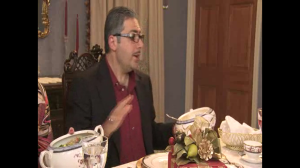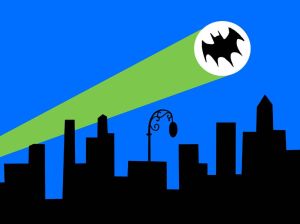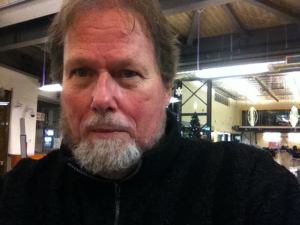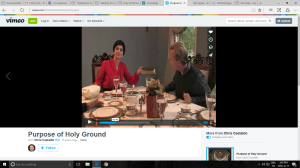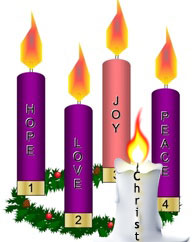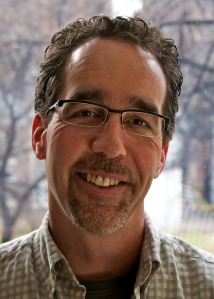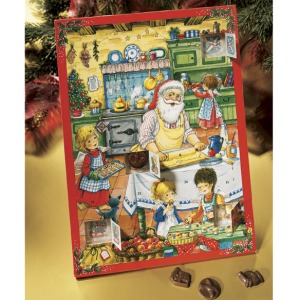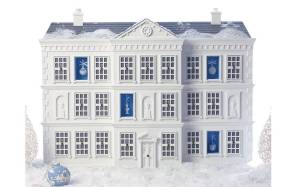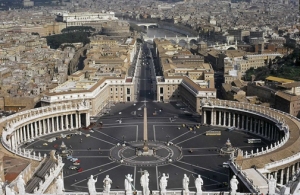
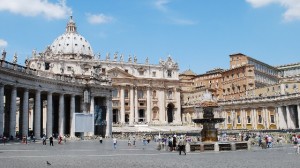
I’ve always heard something haunting but yet beautiful whenever I hear Karin Bergquist’s rendition of Over the Rhine’s “Changes Come” from the 2008 Cornerstone Music Festival in Bushnell, Illinois. She wrote the song, with her husband, Linford Detweiler, and the Cincinnati alt-country band recorded it five years earlier in Nashville on Oct. 19, 2003. The lyrics go partially like this:
“Changes come, Turn my world around, Changes come, Turn my world around. Jesus come Turn my world around Jesus come Bring the whole thing down Bring it down.”
Change comes when it comes.
For some reason, this song has been running through my head, as I reflect a bit on Nostra Aetate (“In Our Time”) the 624 words in English language translation declaration on the relation of the Roman Catholic Church to non-Christian religions that Catholic bishops adopted 50 years ago today, near the conclusion of the Second Vatican Council, which ended Dec. 7, 1965.
Perhaps it also resonates after the three-week Synod on the Family from Oct. 4 to Oct. 25, which just ended. One of the great issues of the synod, which advised Pope Francis, was whether civilly divorced Catholics who remarry, and haven’t received an annulment within the Catholic Church, might be admitted pastorally, if not doctrinally, to the sacrament of the Eucharist. The Church teaches that the sacrament of marriage is “indissoluble” and that remarried Catholics who have not received annulments are committing adultery and living in sin. They may receive communion if they abstain from sex.
Pastoral versus doctrinal. Discipline versus doctrinal. Orthodox versus heterodox. These are always the stuff of great Catholic debates among ourselves. Doctrine encompasses the overall teachings of the Church. For example, Humanae Vitae (“Of Human Life”) now Blessed Pope Paul VI’s encyclical teaching on birth control. Pastoral practice is how the Church applies doctrines in real life.
Doctrine is important, but not every doctrine is dogma, which refers to core Catholic beliefs, such as the Resurrection, which is foundational. The resurrection of Jesus Christ is the kingpin upon which all of Christianity and Catholicism stands or crumbles. If Christ has not been raised from the dead then Christian faith is futile. No other prophet of any religion has come back from the dead. In the Apostle Paul’s First Letter to the Church at Corinth in (15: 14-19), he writes of the resurrection of Jesus as being the central doctrine in Christianity: “If Christ has not been raised, then our preaching is in vain and your faith is in vain,” Paul observed. And if Christ has not been raised, he added, God is being misrepresented because “we testified of God that he raised Christ.” Therefore, if Christ has not been raised, “your faith is futile: “If only for this life we have hope in Christ, we are to be pitied more than all men.” The entire Christian faith hinges upon the centrality of the resurrection of Jesus on the third day.
The Old Testament Mosaic law allowed for divorce and remarriage among the Israelites. The Israelites saw divorce as a way to dissolve a marriage and enable the spouses to remarry others so the Pharisees questioned Jesus when he taught on the permanence of marriage by asking, “Is it lawful to divorce one’s wife for any cause?
As we see in the Synoptic Gospels of Saints Matthew (19: 3-8); Mark (10: 2-9); and Luke (16: 18), Jesus answered, “Have you not read that he who made them from the beginning made them male and female, and said, ‘For this reason a man shall leave his father and mother and be joined to his wife, and the two shall become one flesh’? So they are no longer two but one flesh. What therefore God has joined together, let not man put asunder.
“They said to him, ‘Why then did Moses command one to give a certificate of divorce, and to put her away?’ He said to them, ‘For your hardness of heart Moses allowed you to divorce your wives, but from the beginning it was not so.’”
Catholics therefore believe Jesus re-established the permanence of marriage among his followers and raised Christian marriage to the level of a sacrament, teaching that sacramental marriages cannot be dissolved through divorce, which was part of Jesus’ perfection of the Old Law, of which he said, “Think not that I have come to abolish the law and the prophets; I have come not to abolish them.”
While there is much debate about what the synod’s advice on the subject to the Holy Father means, the final document offers divorced and remarried Catholics the possibility of returning to fuller participation in the Church, on a case-by-case basis, after receiving spiritual counselling from priests in what is called the “internal forum.” It says nothing about whether divorced and remarried Catholics may or may not receive communion. But it does say divorced and civilly remarried Catholics “must not feel excommunicated.” The document said that opening to Catholics in less-than-perfect situations was not a “weakening of the faith,” or of the “testimony on the indissolubility of marriage”; instead, it was a sign of the church’s charity.
In his closing address last Saturday night, Pope Francis said the Synod on the Family was “about trying to view and interpret realities, today’s realities, through God’s eyes, so as to kindle the flame of faith and enlighten people’s hearts in times marked by discouragement, social, economic and moral crisis, and growing pessimism.
“It was about bearing witness to everyone that, for the Church, the Gospel continues to be a vital source of eternal newness, against all those who would ‘indoctrinate’ it in dead stones to be hurled at others.
“It was also about laying bare the closed hearts which frequently hide even behind the Church’s teachings or good intentions, in order to sit in the chair of Moses and judge, sometimes with superiority and superficiality, difficult cases and wounded families.
“It was about making clear that the Church is a Church of the poor in spirit and of sinners seeking forgiveness, not simply of the righteous and the holy, but rather of those who are righteous and holy precisely when they feel themselves poor sinners.”
Change comes when it comes.
Peter, the first pope, and the apostles that Jesus chose were, for the most part, married men, although the Council of Elvira decreed in 306 a priest who sleeps with his wife the night before mass would lose his job.
It wasn’t until Pope St. Gregory VII in 1074 that celibacy was imposed uniformly across the Latin Rite of the Catholic Church. And It wasn’t until 1215 that the Fourth Lateran Council used the word transubstantiated, when speaking of the change that takes place in the Eucharist, while it would be a few years later at the Second Council of Lyons, convened in 1274, that the teaching of Pope Innocent IV was used to develop a formal declaration on purgatory.
In 1964 and 1965, a year after the Second Vatican Council’s Constitution on the Sacred Liturgy was enacted, the new mass (Novus Ordo) in the vernacular rather than Latin was introduced, the priest turned around and started celebrating mass facing the people, who could stand to receive the Eucharist, as the altar rails were soon to be removed.
Now Blessed Pope Paul VI proclaimed Paenitemini (Apostolic Constitution On Penance) on Feb. 17, 1966, which allowed episcopal conferences to permit Catholics in their jurisdictions to substitute some other penitential practice aside from abstaining from meat on Fridays, a prescription which had been in force in the universal church since Pope Saint Nicholas 1, also known as Saint Nicholas the Great, in 851 (with the exception in Canada of Ash Wednesday and Good Friday in accordance with the prescriptions of Canon 1253, proclaimed in 1983. Fridays are days of abstinence, but Canadian Catholics can substitute special acts of charity or piety on this day).
Following the lead of the Vatican and national episcopal conferences in France, Canada and Mexico earlier in 1966, the U.S. norms (which are similar but not identical to those in Canada) were approved in “On Penance and Abstinence,” a pastoral statement of the National Conference of Catholic Bishops on Nov. 18, 1966. The first day Friday American Catholics could eat meat on Friday under the new regulations was the first Friday of Advent on Dec. 2, 1966.
Change comes when it comes. Or not. But history will not move backwards no matter how much I personally would like to hear monks chanting vespers in Latin at every mass.
Canadian Catholics, both heterosexual and homosexual, will continue to get married and divorced, either inside or outside the Church.
Same-sex marriage has been legal in Canada for more than 10 years since the federal Civil Marriage Act received royal assent on July 20, 2005. Carey Nieuwhof, a Protestant evangelical and lead pastor of Connexus Church in Barrie, Ontario, in a blog post last June 29 headlined, “Some Advice on Same-Sex Marriage for US Church Leaders From a Canadian” wrote, “Most of us reading this post have been born into a unique season in history in which our culture is moving from a Christian culture to a post-Christian culture before our eyes.
“Whatever you think about history, theology or exactly when this shift happened, it’s clear for all of us that the world into which we were born no longer exists.
“Viewpoints that were widely embraced by culture just decades ago are no longer embraced. For some this seems like progress. For others, it seems like we’re losing something. Regardless, things have changed fundamentally.”
Nieuwhof went onto write: “If you believe gay sex is sinful, it’s really no morally different than straight sex outside of marriage.
“Be honest, pretty much every unmarried person in your church is having sex (yes, even the Christians).
“I know you want to believe that’s not true (trust me, I want to believe that’s not true), but why don’t you ask around? You’ll discover that only a few really surrender their sexuality.
“Not to mention the married folks that struggle with porn, lust and a long list of other dysfunctions.
“If you believe gay marriage is not God’s design, you’re really dealing with the same issue you’ve been dealing with all along – sex outside of its God-given context.
“You don’t need to treat it any differently.
“By the way, if you don’t deal with straight sex outside of marriage, don’t start being inconsistent and speak out against gay sex.
“And you may want to start dealing with gluttony and gossip and greed while you’re at it.”
Meanwhile, abortion has been legal in Canada for almost three decades now, since Jan. 28, 1988 when the Supreme Court of Canada, in Dr. Henry Morgentaler, Dr. Leslie Frank Smoling and Dr. Robert Scott v. Her Majesty The Queen, struck down Section 251 of the Criminal Code of Canada, the 1969 therapeutic abortion criminal law, as unconstitutional, without force and effect, in a 5-2 decision.
The law was found to violate Section 7 the Charter of Rights and Freedoms because it infringed upon a woman’s right to “life, liberty and security of person,” the court held. Morgentaler, Smoling and Scott had been charged in 1983 with performing illegal abortions at their Toronto clinic. A Supreme Court of Ontario jury had acquitted them on Nov. 8, 1984, but the Crown appealed and on Oct. 1, 1985 the Court of Appeal for Ontario set aside the acquittals and ordered a new trial. Morgentaler, Smoling and Scott then successfully appealed to the Supreme Court of Canada to have the Court of Appeal for Ontario decision overturned and their acquittals restored. The following year, on Nov. 3, 1989, then Progressive Conservative Minister of Justice Kim Campbell introduced in the House of Commons Bill C-43, which, had it been approved by both the House of Commons and the Senate, would have made it a criminal offence to induce an abortion on a woman unless it was done by, or under the direction of, a physician who considered that the woman’s life or health was otherwise likely to be threatened. “Health” was defined as including physical, mental and psychological health.
On May 29, 1990, the House of Commons passed Bill C-43 on third reading by a vote of 140-131. Although cabinet ministers were required to support the bill, it was a free vote for all other MPs. On Jan. 31, 1991, the Senate voted on Bill C-43. As with the House of Commons, it was a free vote except for members of the cabinet, in this case Senator Lowell Murray, leader of the government in the Senate. Of 86 senators present, 43 voted for the bill and 43 voted against it. Under the Rules of the Senate, the 43-43 tie vote is deemed to be a “no” vote, therefore Bill C-43 was defeated.
Pope Francis, the pope of mercy, understands how the world and families really are in the real world, rather than how we might simply wish them to be.
Divorce is reality.
Same-sex marriage is reality.
Abortion is reality.
So what are we going to do? As Catholics.
You can also follow me on Twitter at: https://twitter.com/jwbarker22
55.754600
-97.847100


 The first candle of Advent, lit around the world yesterday, symbolizes hope. It is sometimes called the “Prophets’ Candle” or “Prophecy Candle” in remembrance of the prophets, especially Isaiah, who foretold the birth of Christ. It represents the expectation felt in anticipation of the coming Messiah.
The first candle of Advent, lit around the world yesterday, symbolizes hope. It is sometimes called the “Prophets’ Candle” or “Prophecy Candle” in remembrance of the prophets, especially Isaiah, who foretold the birth of Christ. It represents the expectation felt in anticipation of the coming Messiah.


